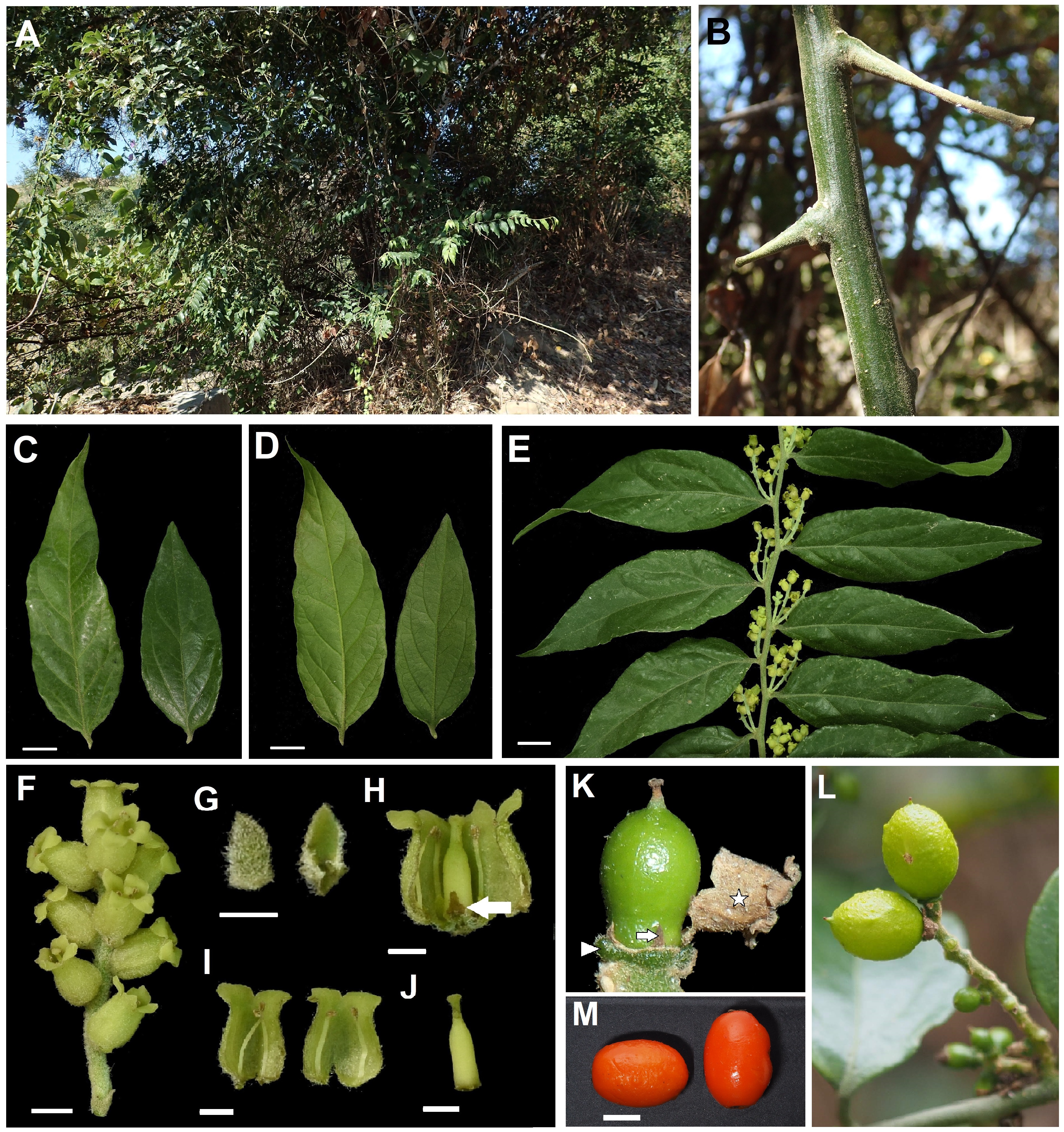
Cansjera rheedei J.F. Gmelin. A. Habitat; B. Thorns derived from short shoots; C. Leaf, adaxial view; D. Leaf, abaxial view; E. Inflorescence, axillary, 1–3 fascicled; F. Spikes with 8–13 flowers, perianth urceolate, perianth lobes 4; G. Bract, tomentose outside (left) and glossy inside (right); H. Dissected flower, with erect scales (arrow); I. dissected flower, stamens 4, as many as and opposite to perianth lobes; J. Ovary cylindrical; K. Immature drupe, disc (arrowhead), scales (arrow) and perianth withered and dropped (star). L. Drupe ellipsoidal; M. Matured drupes, orange to red. Scale bars: C–E = 1 cm; F = 2 mm, G–J = 1 mm, M = 5 mm. All pictures taken by the authors, except K, which was photographed by Hsieh Jo-Ping; L–M, which were photographed by Ming-Hui Chan.